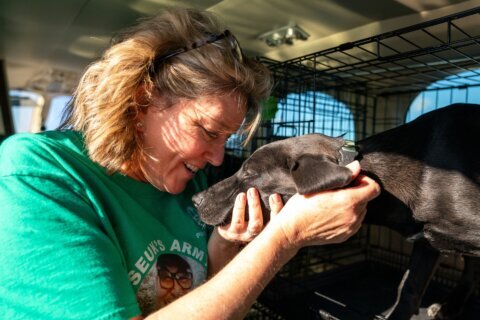Animals are always fighting against disease, and they don’t need a notification from the CDC to practice social distancing. It comes naturally.
“When we look to animals, we see that they used many of the same behaviors that we are being forced to do now, which is distancing ourselves from other members of our species,” said Dana Hawley, a professor of biological sciences at Virginia Tech.
“Anytime we see a behavior that has evolved again and again in lots of different animals, that tells us that this has to be a very beneficial behavior,” said Hawley.
A number of animals social distance, including some birds, fish, monkeys, amphibians, and insects.
Hawley said ants provide a perfect example: They live in cramped colonies of thousands, so their situation is a perfect storm for a disease outbreak.
“They have evolved the ability to very rapidly institute a number of different behaviors when a disease creeps in to the colony and, effectively, they do exactly what we are doing now,” she said.
Hawley said the sick ants will immediately self-isolate and cut themselves off from the rest of the colony.
Even the healthy ants change their behavior and reduce how much they are interacting with the others in the colony — especially the most vulnerable, such as the queen and the nurses that take care of the babies.
Closer to our own species, mandrill monkeys also social distance when they notice one of the troop has a parasite.
“Most of their social interactions are things like grooming each other — they’ll spend a lot of time picking off parasites from each other and making sure the fur is clean, and they do this with lots of different members of their group,” Hawley said. “But if they detect that one of those group members is sick, they will specifically not groom that individual.”
Hawley said just like with humans, getting sick with a contagious disease is one of the most dangerous things that can happen in an animal community, so animals use social distancing in exactly the same as humans do.
“By practicing social distancing, they are ensuring they can stay alive and go on to live rich social lives and go on to produce offspring,” Hawley said.
While we usually have the ability to get medical assistance for most diseases and illnesses, the novel coronavirus has in some respects returned us to the ranks of the animal kingdom until there is an effective treatment.
“In a situation like this where we have a novel disease, behavior is one of our only tools as well. COVID-19 has almost put humans in the same position as animals are during any disease outbreak they face,” Hawley said. “For us right now, behavior is our number-one tool, the most rapid tool we can use, and the most effective tool we can use until we have other tools in place.”







